| Darren Waterston and Tyrus Miller :The Flowering (The Fourfold Sense) at Lewis and Clark
I was surprised to learn that Darren Waterston and Tyrus Miller were working on a series of prints, loosely based, on the experiences of Saint Francis because it is a difficult subject matter. Not only is there a saint francis who preaches to the birds but there is also the Saint Francis of the stigmata who also cleans the wounds of the poor with his mouth to overcome his own revulsion. This is a Saint that went looking for the divine in the dark places of the human body, soul, and psyche. It is an exhibition of thirteen prints by Darren Waterston accompanied by original broadsides by Tyrus Miller inspired by the life of Francis of Assisi. The prints were created in collaboration with Gallery 16 in San Francisco and is on view until October 21, 2007. A larger exhibition of paintings by Waterston called Constellations is on view as well but The Flowering (The Fourfold Sense) was of particular interest.
Each of us already knows what our bodies look like. There are different proportions, but more or less it's just several limbs, a layer of skin covering a skeleton of bones with various internal organs. That is our body, but is it what we are? Perhaps more than any other, Saint Francis found the divine through the body. He did not find it by looking at the ideal beauty of the ancient Greeks but in the wounds of the lepers and the homeless that surrounded his home in Assisi. He embraced things that we would normally turn away from like the bleeding sores of those who are sick. He resisted the temptation to run away, transcended his natural feelings of self preservation, and cultivated compassion to discover the divine through the path of caring for those around us.
The broadsides and the prints reinforce one another and perhaps, provide a subtle critique of the strength and weakness of each medium. One works with language of images and the other with words. Within an image, because Waterston prints are not explicitly scenes from the life of St. Francis, we are allowed to make our own story. In Miller's text, he provides the story, but we are allowed to imagine what the story looked like. Each demonstrates the limitations of the other and we are constantly navigating between two realms of thought. In this way, I think that the prints and the broadsides work well together and they prevent one or the other from becoming heavy handed.
Miller's essay in the catalog begins with the best quote by Thomas Celano: "Beware of singularity: it is nothing but a beautiful abyss." It provides the perfect introduction to Waterston's ability to combine multiple layers of meaning of into a single image. Most of the prints usually include one or more references to the stigmata, sometimes to his eyes, and occasionally a skull or full skeleton. My favorite prints are Shadow, which looks like a large swollen eye which can read as relating to St. Francis's difficulties with his eyes and his blindness in later life. The print is saturated with a red and orange circle that has the lines radiating from the center of the circle. The lines makes me think of the ridges that one sees when looking at the iris close up. The radiating lines also have a different perhaps subtler meaning. In the prints, any time person interacts with the divine such as Mount Verna, Leper's Conversion, and Receiving the lines function as physical manifestation of the will of the divine. In each case, except for Shadow, the lines radiate from a center beyond the border of the prints. In Shadow, the lines radiate from the center of the eye, Saint Francis's eye, but it also allows for the potential of the divine to radiate from within each of us. Whether this was intentional or not, only Waterston knows, but it is an interesting way to look at the sequence and images of the prints.
The prints that are less successful are those that are too literal. Weeping is the first one that comes to mind. The crying, isolated skeleton before a Ken Noland/ Ross Bleckner orb of light doesn't take me anywhere and it seems a little heavy handed compared to the light, nonlinear feel of the rest of the prints. The prints are better when they veer away from being illustrations of a particular feeling or experience. A good example of this would be Dome. In Dome, we are confronted a skull floating in an undifferentiated space filled with spheres of light and color. Is the dome the top of the head or the dome of the celestial sky? Waterston never makes it explicitly clear so we are left to draw our own conclusions. He is generous because he lets us finish the story.
A good example of something that we have to translate through our own experience would be Umbria. Is it a swollen sun? A open wound? A stigmata? We never know and it is up to the viewer to make sense of their own experience but we have the experience directly. It would have been great if there had been a print that transcended the body and human experience to reveal the point of Saint Francis's existence. It might be Heaven, God, or enlightenment but whatever it is, it would have been great for Waterston to show us the other side, the goal that St. Francis was striving for by helping the poor and the sick.
I felt like Tyrus Miller walks onto some unstable ground in the catalog when he quotes W.J.T. Mitchell as pictures being intrinsically "wanting." The line of thought that the pictures have both a face, a will and at times, manifesting a stigmata. The implication would be that the pictures have a life beyond our experience of them, that the pictures could exist outside of our experience. If Miller was making that as a serious proposition, I think it misrepresents Waterston's prints and the life of Saint Francis. Yes, by viewing the prints we complete the prints but the prints do not need us to do so, and they are certainly not lacking before that moment. I think what Miller is saying is that the prints have qualities of the body. I wish he would have just left it at that.
Perhaps it is no coincidence that Bodies World 3 is on exhibition at OMSI during the same time Waterston prints are up at Lewis and Clark. If we had Hirst's Hymn at the museum we could have made the trifecta. Portland must have a fascination with the inside of our bodies right now. As you can imagine, Waterston prints are an intense look at qualities and experiences that made the man St. Francis. When they are paired with the texts by Miller, they reveal two parallel trains of thought that occasionally collide in the people that walk through the show following in the footsteps of Saint Francis. |
Tuesday, March 17, 2009
Subscribe to:
Post Comments (Atom)
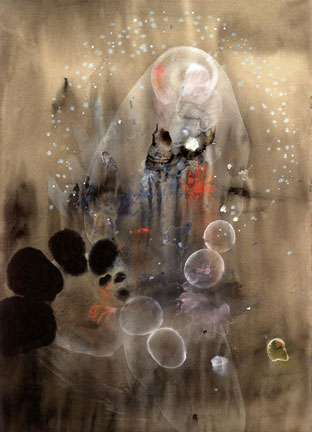
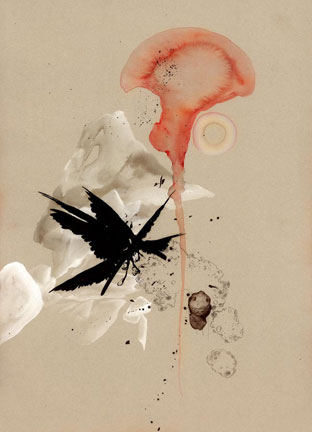
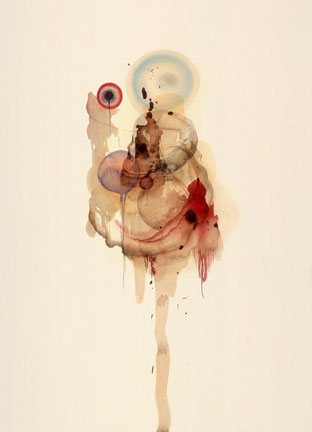
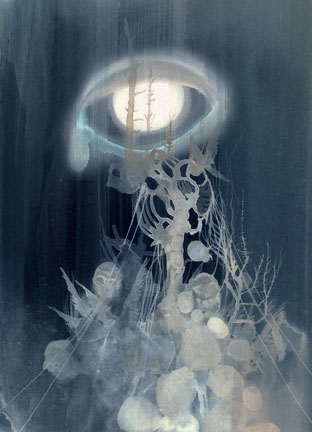
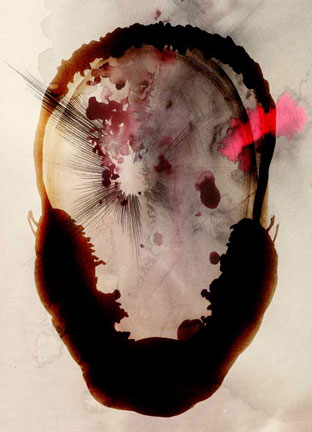
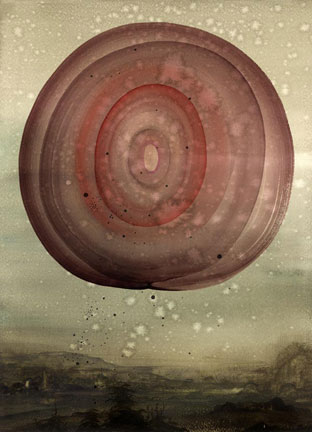
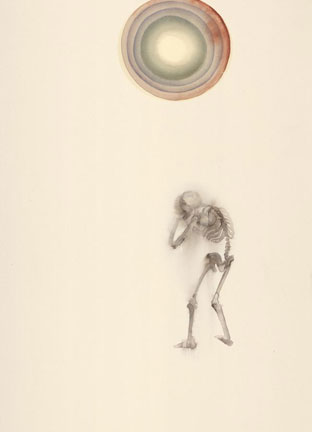
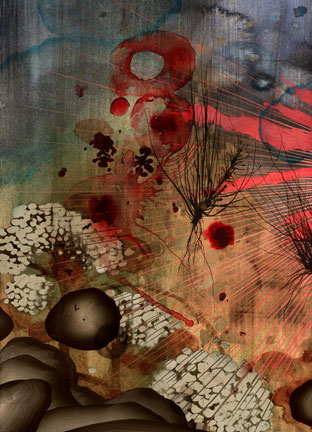

No comments:
Post a Comment